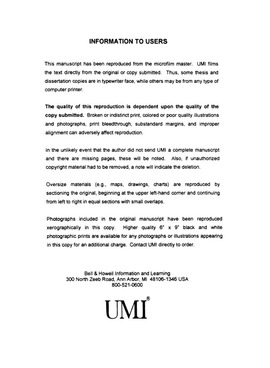| dc.contributor.advisor | O'Hair, Mary John, | en_US |
| dc.contributor.author | S√ʻhez, Ra√∫nt, | en_US |
| dc.date.accessioned | 2013-08-16T12:18:05Z | |
| dc.date.available | 2013-08-16T12:18:05Z | |
| dc.date.issued | 2001 | en_US |
| dc.identifier.uri | https://hdl.handle.net/11244/267 | |
| dc.description.abstract | The purpose of this study was to examine and document a principal's practices, obstacles, and action plans in facilitating a school's movement from a conventional school to a democratic school community. Specifically, the researcher examined 10 documented practices of high achieving schools in hopes to identify examples of how each practice was initiated and sustained in the school. In particular the role of the principal in the process; factors which kept the principal and school from engaging more completely in the practice; and how the principal and school worked to overcome obstacles and to develop plans of action were examined. While efforts to create democratic school communities are collaborative and inclusive, the discussion of the findings, conclusions, implications, and recommendations focused on the principal's role as facilitator of the movement. | en_US |
| dc.description.abstract | The major question addressed in this study was, what practices, obstacles, and action plans does a principal engage in when facilitating a school's movement from bureaucratic to democratic? Qualitative case study inquiry was used to address the study's question. The case study used a single, within-sited case (one principal on their assigned campus) with a bounded system---bounded by time (6 months of data collection) and place (a single school campus). Triangulation of data from interviews, observations, document and record review, and field notes, combined with information from the literature review was used to increase the probability of objective conclusions as they emerged from the aforementioned sources (Lincoln & Guba, 1985). Research identified five democratic school frameworks linked to movement from conventional to democratic. These were: IDEALS (O'Hair, McLaughlin & Reitzug, 2000); conventional to democratic schooling continuum (O'Hair, McLaughlin & Reitzug, 2000); successful high school restructuring practices (Lee & Smith, 1994); democratic schools framework (Glickman, 1993); and authentic achievement (Newmann, 1996). The inquiry revealed the following, as well as several other conclusions: the principal engaged in an intensive effort to establish democratic practices at Mireya High School (pseudonym); these democratic practices have positively affected the school by transporting student-learning responsibilities to the entire school community; and the obstacles and action plans resulting from the failure to implement democratic practices is a cohesive responsibility of the entire school community and not solely of the principal. The study concludes with recommendations and implications for future research. | en_US |
| dc.format.extent | x, 221 leaves ; | en_US |
| dc.subject | Education, Administration. | en_US |
| dc.subject | Democracy Study and teaching (Secondary) United States Case studies. | en_US |
| dc.subject | Critical pedagogy United States Case studies. | en_US |
| dc.subject | High schools United States Administration Case studies. | en_US |
| dc.subject | High school principals United States Case studies. | en_US |
| dc.subject | School management and organization United States Case studies. | en_US |
| dc.title | From conventional school to democratic school community: A case study of a principal's practices, obstacles, and action plans. | en_US |
| dc.type | Thesis | en_US |
| dc.thesis.degree | Ed.D. | en_US |
| dc.thesis.degreeDiscipline | Department of Educational Leadership and Policy Studies | en_US |
| dc.note | Major Professor: Mary John O'Hair. | en_US |
| dc.note | Source: Dissertation Abstracts International, Volume: 62-01, Section: A, page: 0035. | en_US |
| ou.identifier | (UMI)AAI3001314 | en_US |
| ou.group | Jeannine Rainbolt College of Education::Department of Educational Leadership and Policy Studies | |
